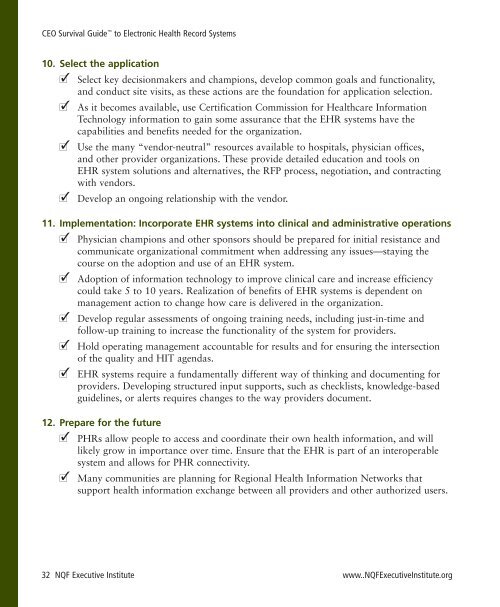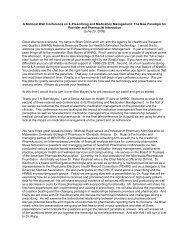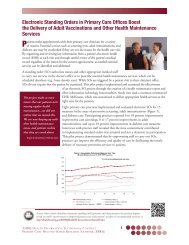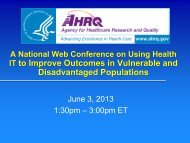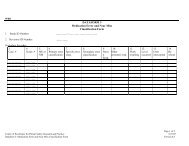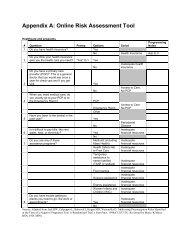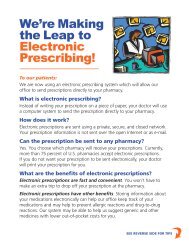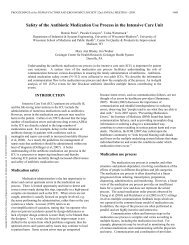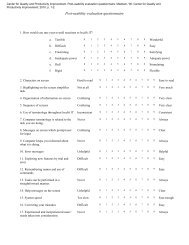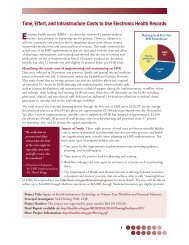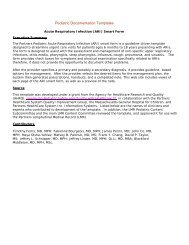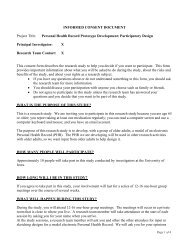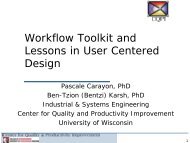CEO Survival Guide - AHRQ National Resource Center; Health ...
CEO Survival Guide - AHRQ National Resource Center; Health ...
CEO Survival Guide - AHRQ National Resource Center; Health ...
Create successful ePaper yourself
Turn your PDF publications into a flip-book with our unique Google optimized e-Paper software.
<strong>CEO</strong> <strong>Survival</strong> <strong>Guide</strong> to Electronic <strong>Health</strong> Record Systems10. Select the application■✓ Select key decisionmakers and champions, develop common goals and functionality,and conduct site visits, as these actions are the foundation for application selection.■✓ As it becomes available, use Certification Commission for <strong>Health</strong>care InformationTechnology information to gain some assurance that the EHR systems have thecapabilities and benefits needed for the organization.■✓ Use the many “vendor-neutral” resources available to hospitals, physician offices,and other provider organizations. These provide detailed education and tools onEHR system solutions and alternatives, the RFP process, negotiation, and contractingwith vendors.■✓ Develop an ongoing relationship with the vendor.11. Implementation: Incorporate EHR systems into clinical and administrative operations■✓ Physician champions and other sponsors should be prepared for initial resistance andcommunicate organizational commitment when addressing any issues—staying thecourse on the adoption and use of an EHR system.■✓ Adoption of information technology to improve clinical care and increase efficiencycould take 5 to 10 years. Realization of benefits of EHR systems is dependent onmanagement action to change how care is delivered in the organization.■✓ Develop regular assessments of ongoing training needs, including just-in-time andfollow-up training to increase the functionality of the system for providers.■✓ Hold operating management accountable for results and for ensuring the intersectionof the quality and HIT agendas.■✓ EHR systems require a fundamentally different way of thinking and documenting forproviders. Developing structured input supports, such as checklists, knowledge-basedguidelines, or alerts requires changes to the way providers document.12. Prepare for the future■✓ PHRs allow people to access and coordinate their own health information, and willlikely grow in importance over time. Ensure that the EHR is part of an interoperablesystem and allows for PHR connectivity.■✓ Many communities are planning for Regional <strong>Health</strong> Information Networks thatsupport health information exchange between all providers and other authorized users.32 NQF Executive Institute www..NQFExecutiveInstitute.org


